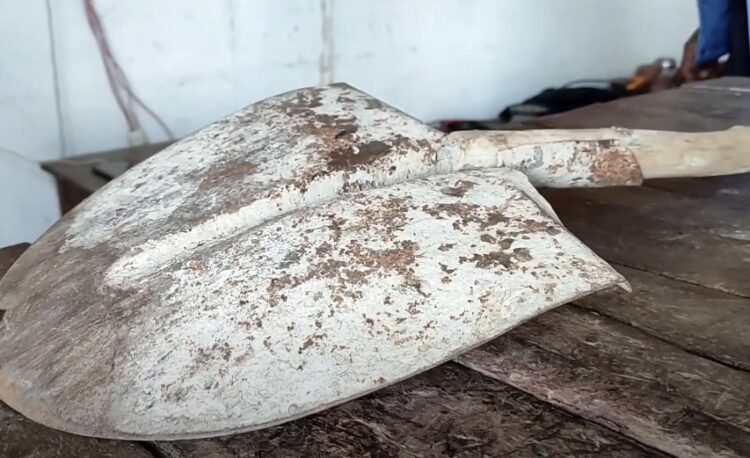Enhancing your garden with rocks can completely elevate its appearance, but how can you further enhance your rock arrangements? Arranging rocks in various formations can result in vertical structures, boundaries, or even artistic sculptures. If you’re exploring this artistic side of gardening, understanding the technique of bonding rocks together is crucial for enhancing your outdoor space. Let’s explore the essential techniques for properly securing rocks in your landscaping endeavors.
Choosing the Right Adhesive
Before you begin, selecting the appropriate glue is crucial for the durability and aesthetics of your project. Here’s a quick comparison to help you choose:
| Type of Adhesive | Pros | Cons |
| Epoxy Resins | Strong bond, water-resistant, fills gaps | Longer setting time can be expensive |
| Construction Adhesives | Easy to apply, quick grip | Less resistant to water over time |
| Silicone Sealants | Flexible, waterproof | Not as strong, can be difficult to apply evenly |
| Polyurethane Glue | Very strong, water-resistant | Expands as it dries, which can be messy |
For most landscaping projects, epoxy resins and construction adhesives are often the go-to choices.
Preparing the Rocks
The process of preparing and gluing rocks is essential for various DIY projects, including crafting, home decor, and outdoor landscaping. Proper preparation and the correct application of adhesive ensure a strong and long-lasting bond between rocks.
Before you start gluing rocks together, it’s crucial to prepare them properly. Here are the steps to ensure your rocks are ready for bonding:
- Clean the Rocks: Remove any dirt, moss, or algae from the surface of the rocks. Wash the rocks thoroughly with water to eliminate any contaminants. Allow the cleaned rocks to dry completely before proceeding;
- Rough the Surface: If the rocks have a smooth surface, it’s important to create a textured area for the adhesive to adhere to effectively. Lightly sand the areas where you intend to apply adhesive. This roughens the surface and improves the grip for the glue;
- Dry Fit: Before applying any adhesive, perform a dry fit by placing the rocks together as you want them to be bonded. This step allows you to assess the alignment and make any necessary adjustments before applying glue.
Applying the Glue
Once your rocks are properly prepared, it’s time to apply the adhesive. The type of adhesive you choose will depend on your project. Common options include epoxy resins and construction adhesives. Here’s how to proceed:
Read Instructions
Different adhesives have specific instructions and curing times that you must follow. Familiarize yourself with the manufacturer’s guidelines and recommendations before starting.
Apply the Adhesive
- For epoxy resins, mix the two parts (resin and hardener) according to the package directions. It’s essential to follow the recommended mixing ratios;
- Apply the mixed epoxy resin to one of the rock surfaces in a generous and even layer. Use a mixing stick or brush to ensure thorough coverage;
- For construction adhesives, a caulk gun can be used to apply the adhesive directly from the tube. Apply a continuous bead along the surface where the rocks will be joined.
Press and Hold
- Once the adhesive is applied, press the rocks together firmly. The amount of pressure required may vary depending on the adhesive used;
- Hold the rocks in place for the duration recommended in the adhesive’s instructions. Some adhesives may require clamping to ensure a secure bond.
Wipe Away Excess
Check for any excess glue that may have oozed out from between the rocks. Use a damp cloth to gently wipe away any excess adhesive before it hardens. This step ensures a cleaner and more polished final look.
Cure Time
Allow the glued rocks to cure for the full duration specified in the adhesive’s instructions. The curing time can range from a few hours to a full day, depending on the type of adhesive used. It’s essential to exercise patience and avoid disturbing the rocks during the curing process to achieve the strongest bond possible.
Tips for Successful Rock Gluing

Rock gluing can be a rewarding and creative endeavor in landscaping, but it requires some essential techniques and precautions to ensure a successful project. Whether you’re building rock sculptures, retaining walls, pathway edging, or water features, here are some detailed tips to help you achieve the best results:
Test Your Glue
Before you start your project, test the glue on a couple of unimportant rocks to understand how it handles and sets. This step is crucial because different adhesives may have varying drying times and strengths. By testing on less significant rocks, you can gain valuable insights into how the adhesive works in your specific conditions. Consider factors like drying time, color changes, and overall bond strength.
Weather Considerations
Be mindful of the weather when working with rock adhesives. Some adhesives are sensitive to temperature and humidity. Here’s a breakdown of weather considerations:
| Weather Factor | Impact on Gluing |
| Temperature | High temperatures can accelerate adhesive drying, so work quickly in hot weather. In cold conditions, some adhesives may take longer to cure, requiring more patience. |
| Humidity | High humidity can affect the curing process, potentially causing slower drying times. Conversely, low humidity may expedite curing but can also affect adhesive properties. |
| Rain | Avoid working in rainy or excessively wet conditions, as moisture can compromise the adhesive bond. Plan your projects on dry days for the best results. |
Layering
When building higher structures with rocks, consider gluing in layers and allow each layer to cure before adding more weight. Layering not only ensures a strong bond but also helps distribute the load evenly, reducing the risk of structural failure. Here’s a step-by-step approach to layering:
- Place the first layer of rocks in your desired arrangement;
- Apply adhesive evenly to the contact surfaces of the rocks;
- Carefully position the next layer on top, making sure the adhesive-covered areas align;
- Apply consistent pressure for a few minutes to allow the adhesive to set;
- Repeat these steps for additional layers as needed, allowing each layer to cure before proceeding.
Safety First
Always prioritize safety when working with adhesives and rocks. Follow these safety guidelines:
- Wear Gloves: Protect your hands from adhesive contact by wearing appropriate gloves, preferably nitrile or latex;
- Eye Protection: Use safety goggles to shield your eyes from adhesive splashes;
- Well-Ventilated Area: Work in a well-ventilated space to minimize inhaling fumes from the adhesive;
- Read Instructions: Carefully read and follow the manufacturer’s instructions on the adhesive container.
Landscaping Design Ideas

Knowing how to glue rocks together for landscaping opens a world of creative possibilities. Here are a few ideas to inspire your designs:
- Rock Sculptures: Create rock sculptures as focal points in your garden;
- Retaining Walls: Small retaining walls can be constructed for elevated garden beds;
- Pathway Edging: Glue rocks together to form stable edges for your garden pathways;
- Water Features: Construct cascades or surrounds for ponds with larger rocks.
Conclusion
Learning how to use glue to assemble boulders for landscaping is a useful skill that can improve the overall look of your yard. Stunning rock features may be made with the correct adhesive, some preparation, and a little of creativity, and they will remain for years. Whether you’re designing a tranquil rock garden or constructing a robust rock wall, the secret is in the bond. Now that you know how to glue rocks together, you may tackle any landscaping project with complete assurance.
FAQs
Q: Can I glue wet rocks together for landscaping projects?
A: It’s not recommended to glue wet rocks as moisture can prevent the adhesive from bonding properly. Always use dry rocks.
Q: What’s the best way to maintain the structures once they’re built?
A: Periodically check the integrity of the glued joints. Some adhesives may degrade over time, especially with outdoor weather exposure.
Q: Are there eco-friendly adhesives for landscaping projects?
A: Yes, there are adhesives available that are more environmentally friendly, with less volatile organic compounds (VOCs). Check the labels for eco-certifications.
Q: How much weight can the glued rocks hold?
A: This depends on the type of adhesive used and the size of the rocks. Epoxy resins tend to hold more weight compared to other adhesives.
Q: Can I use super glue for small rocks?
A: Super glue can be used for small rocks, but it may not hold up well against the elements over time. It’s best for temporary fixes or indoor projects.

